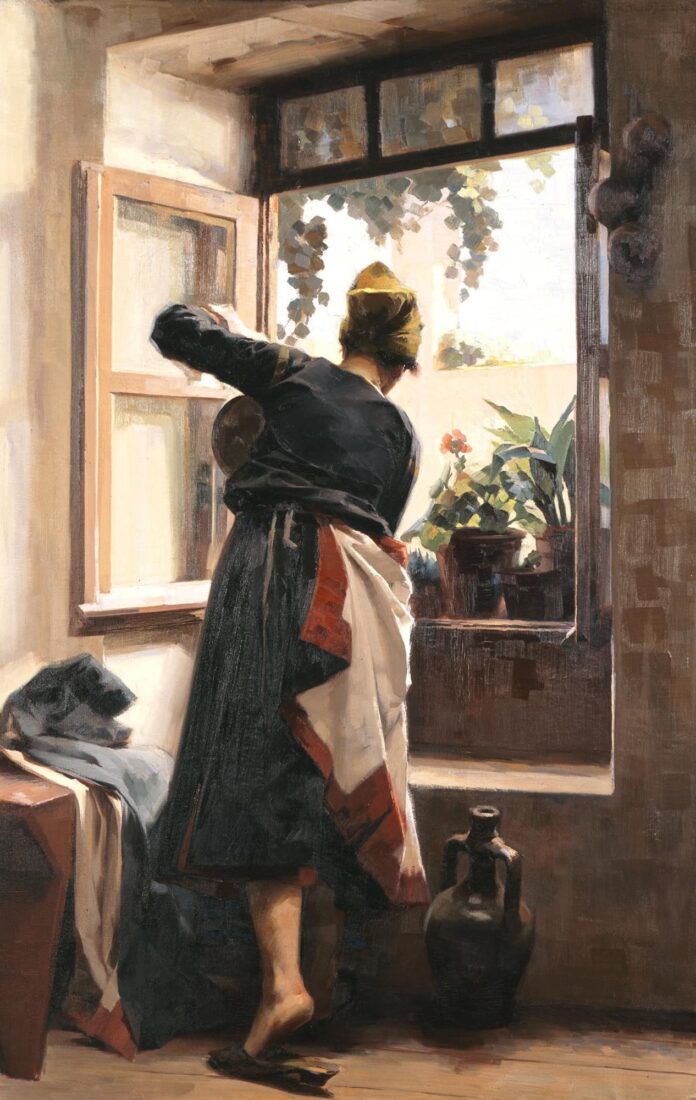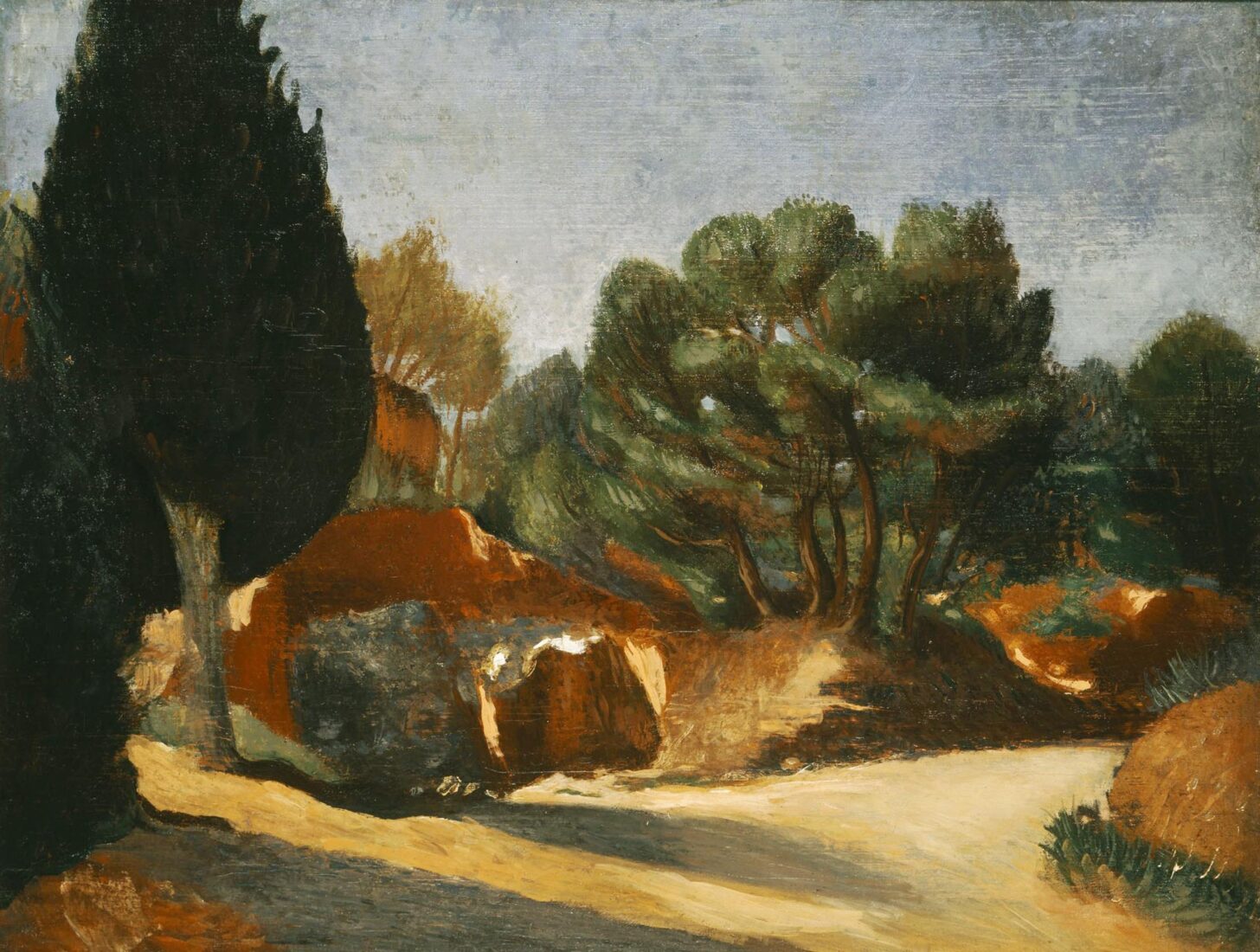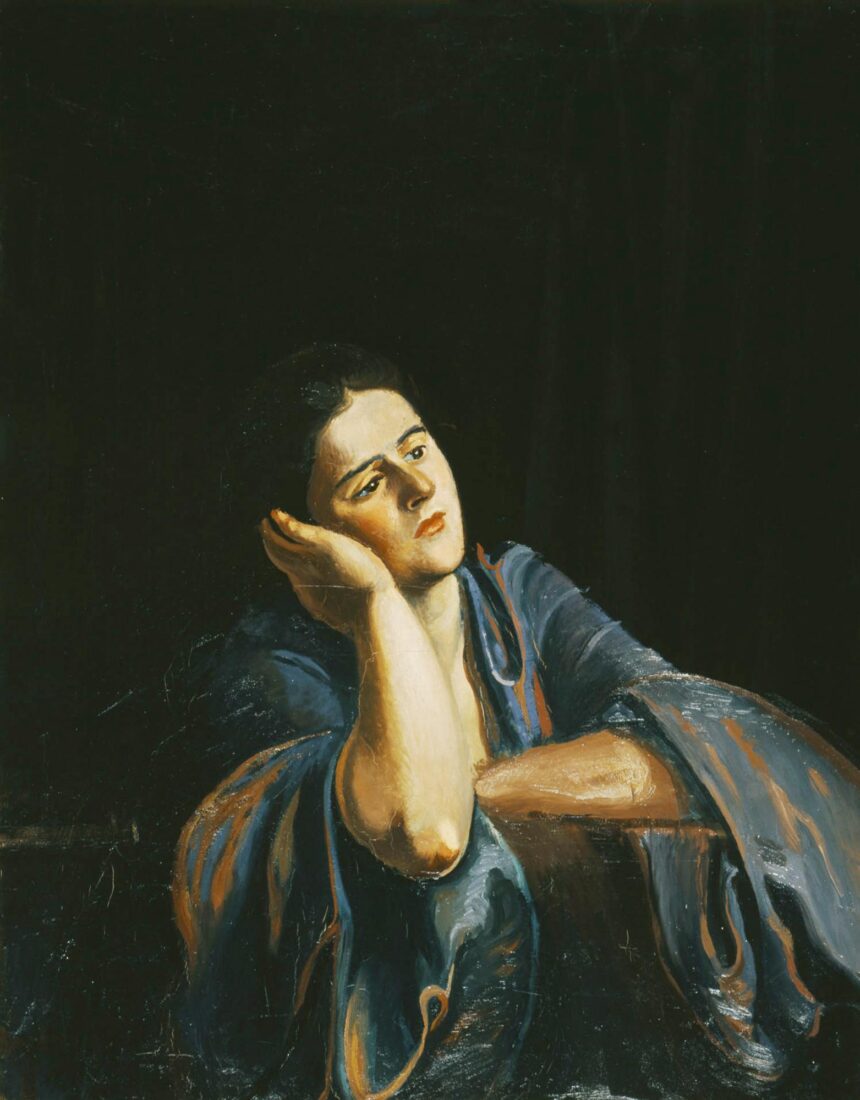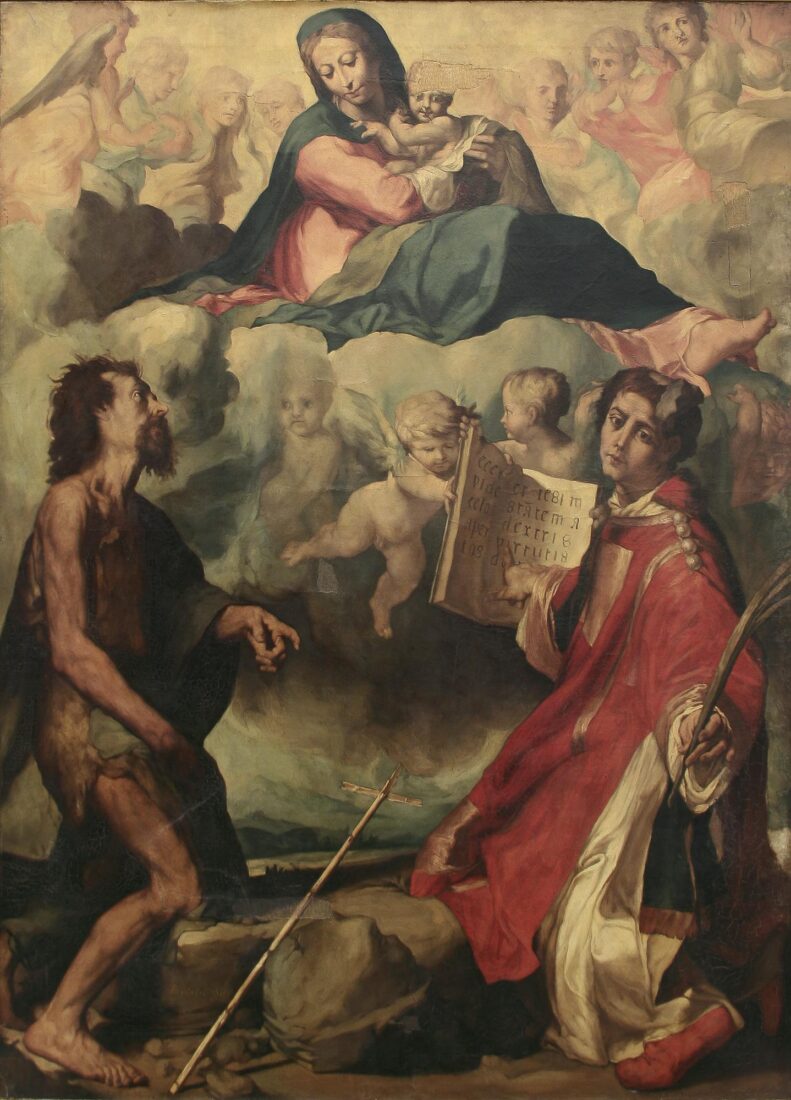

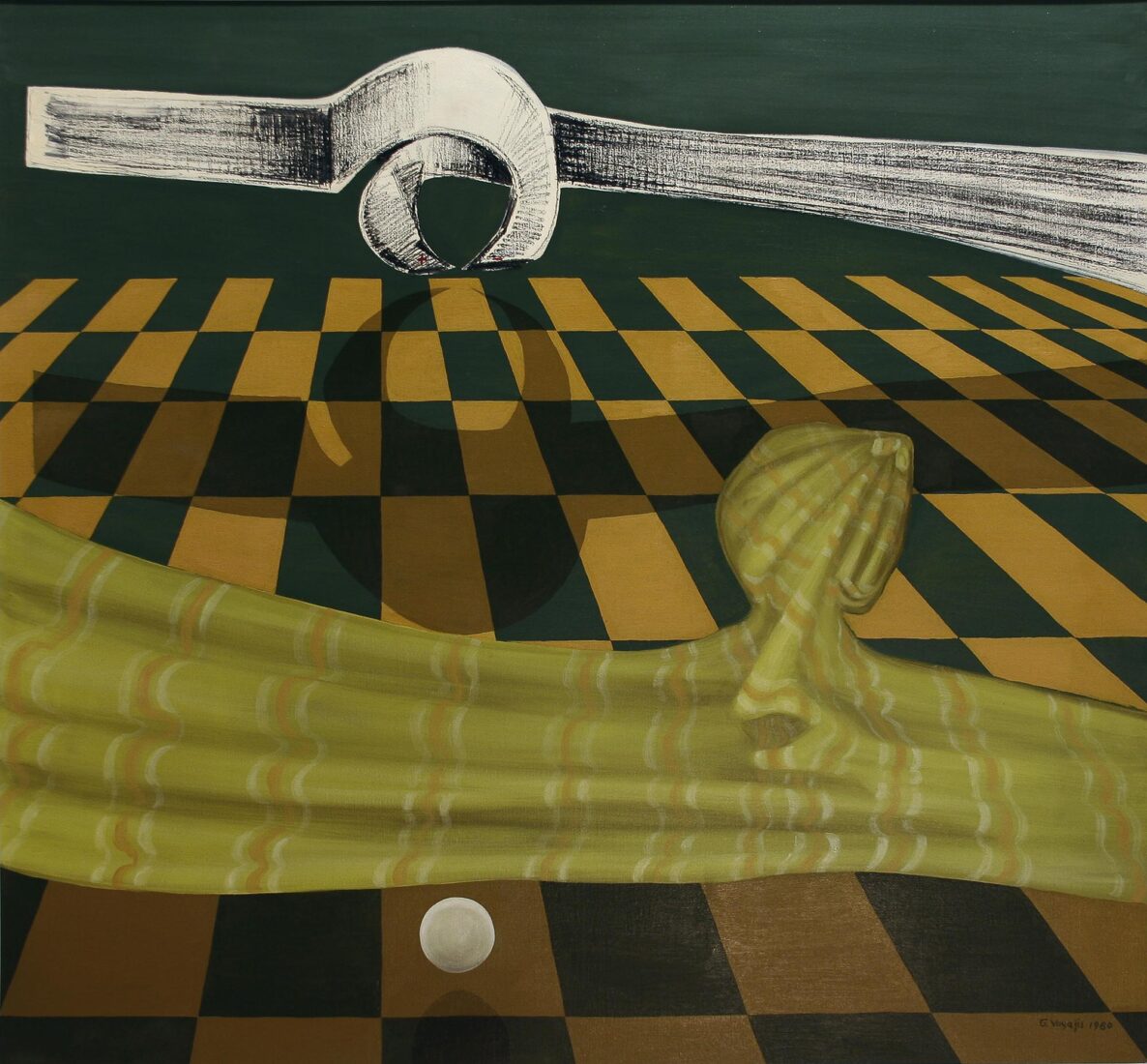
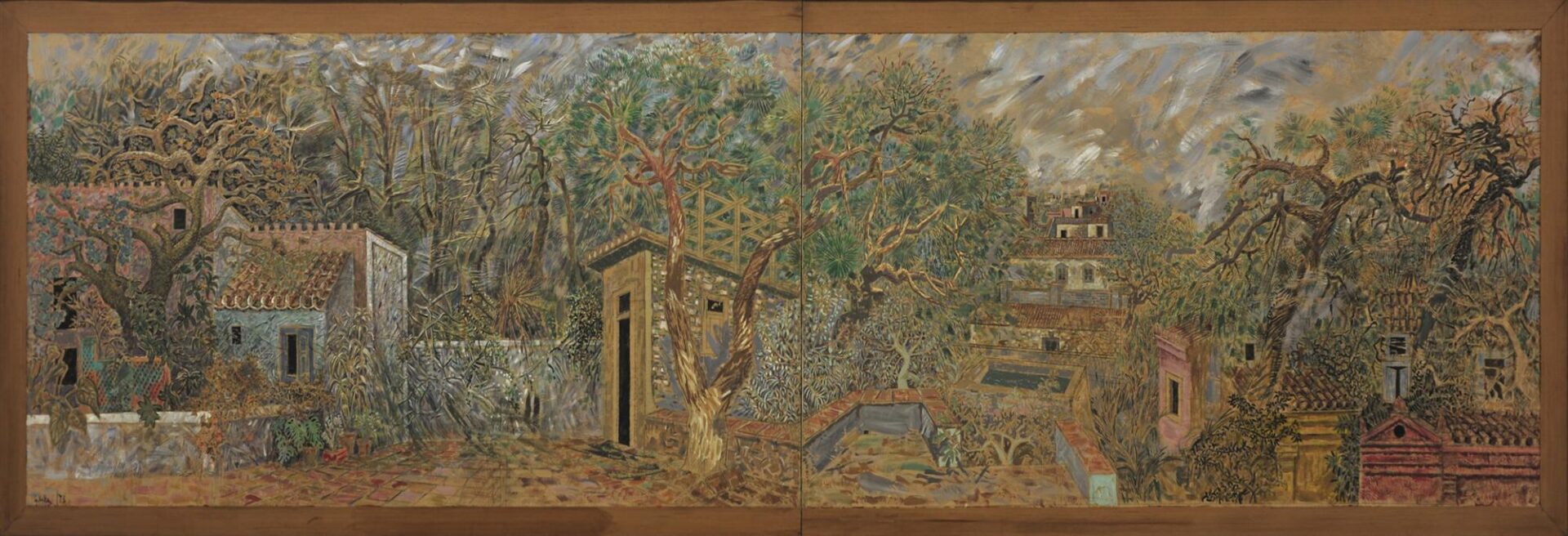
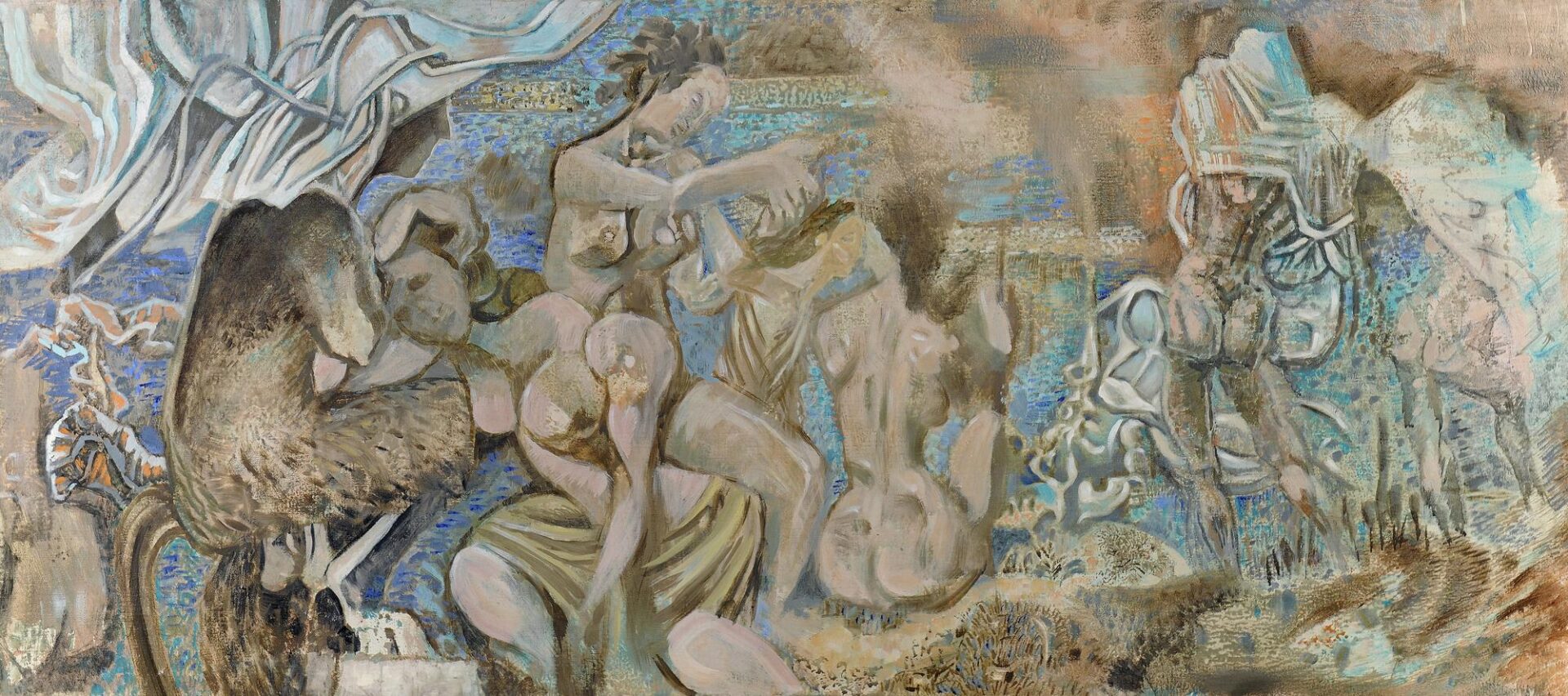
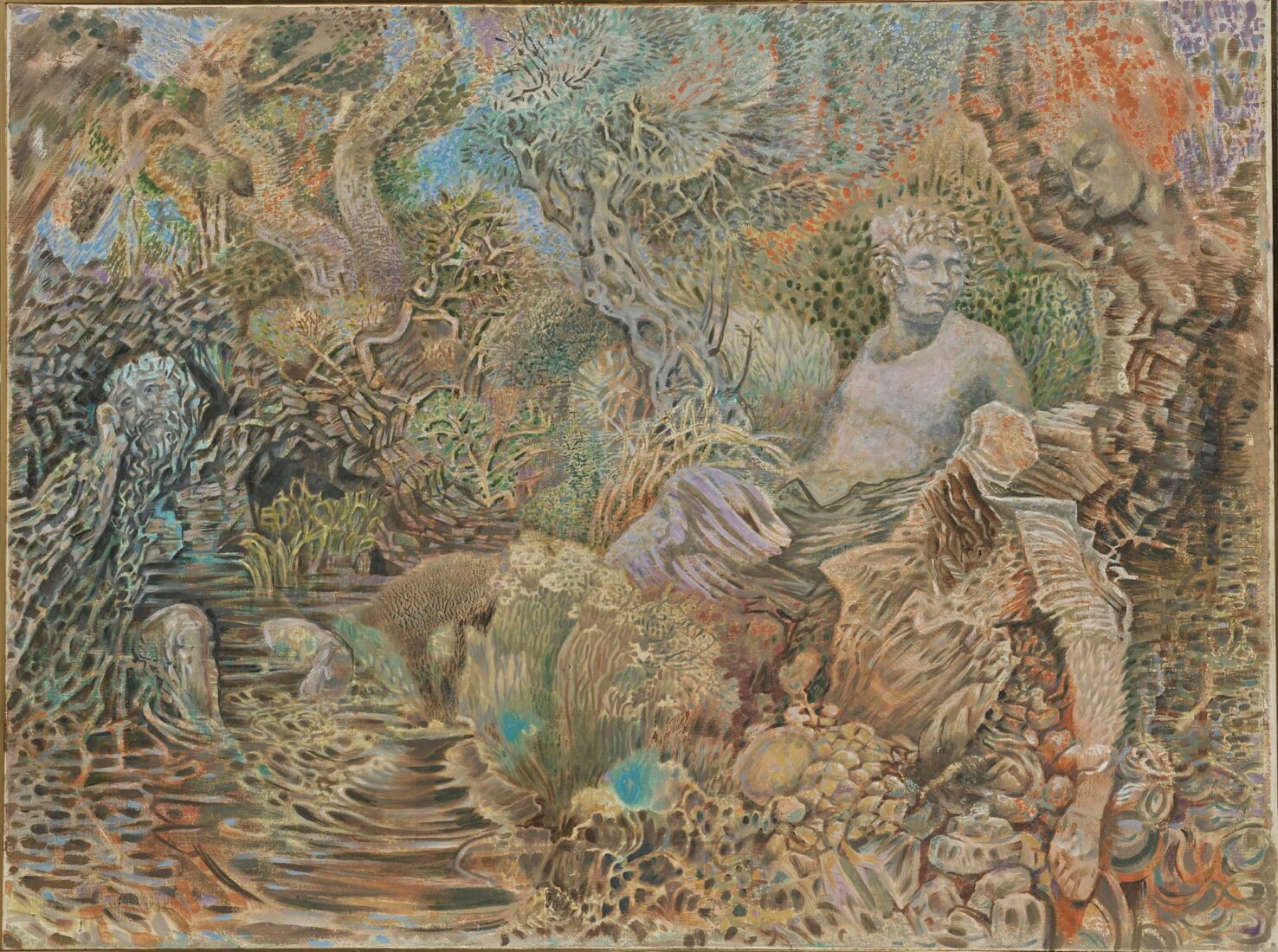
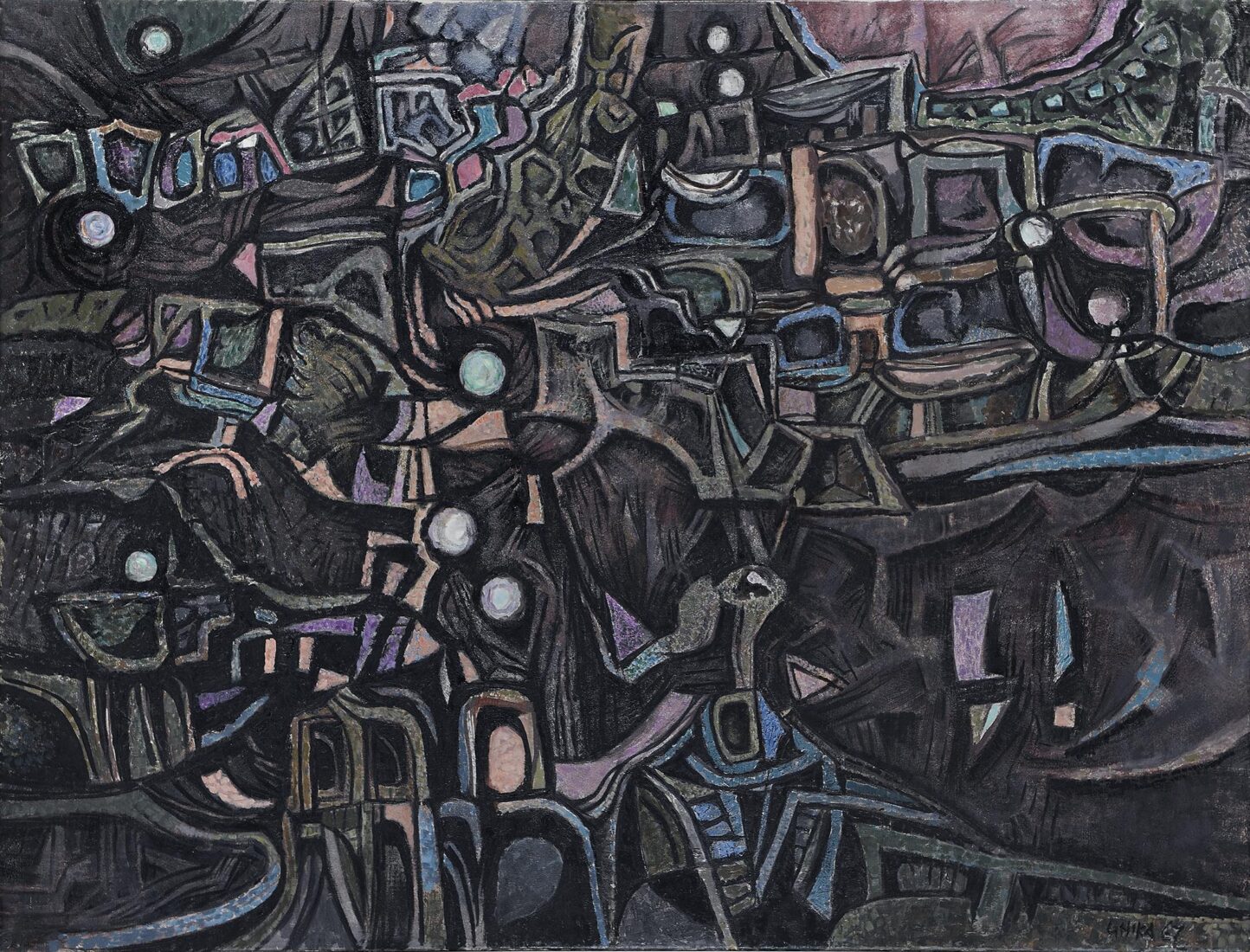
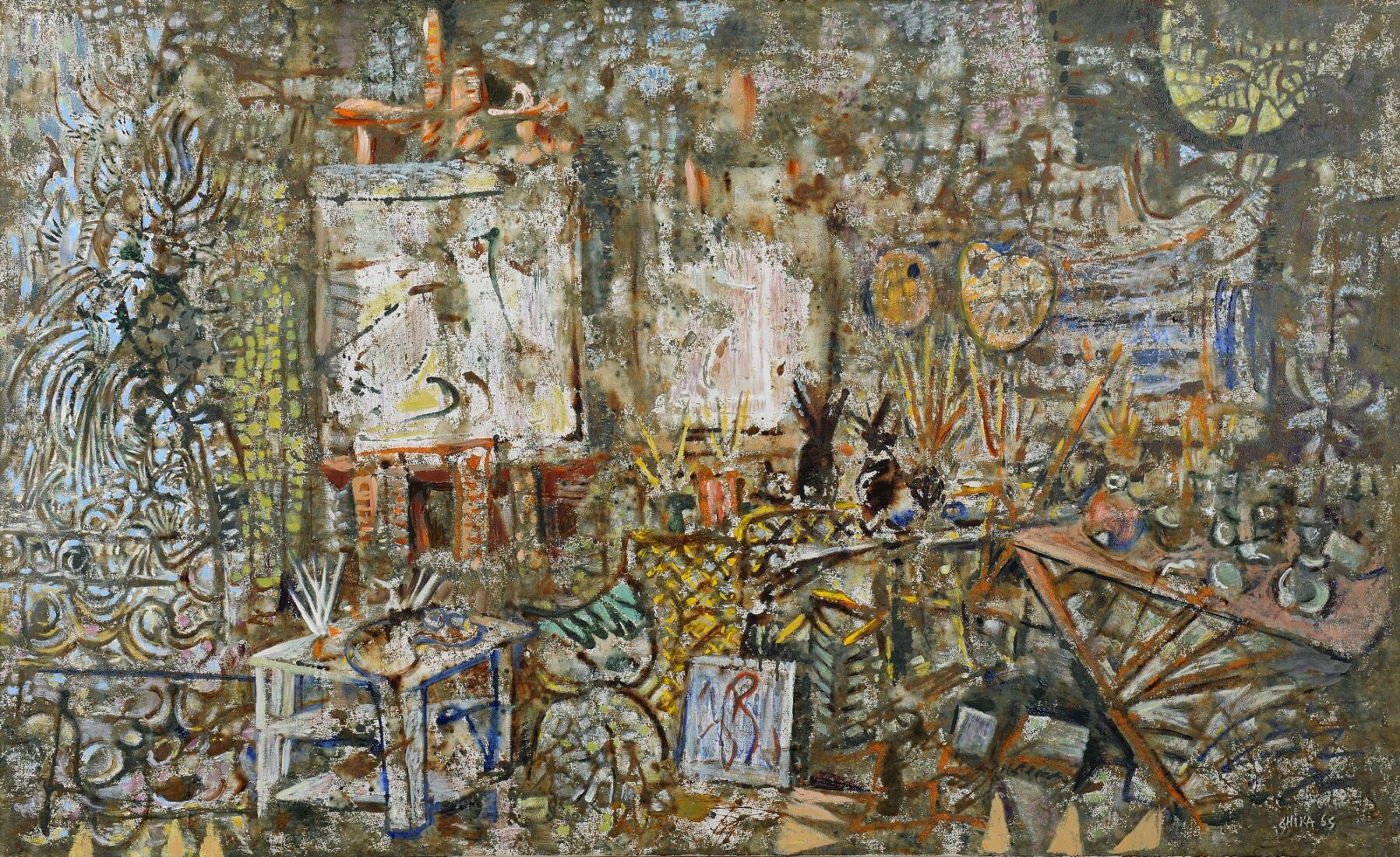
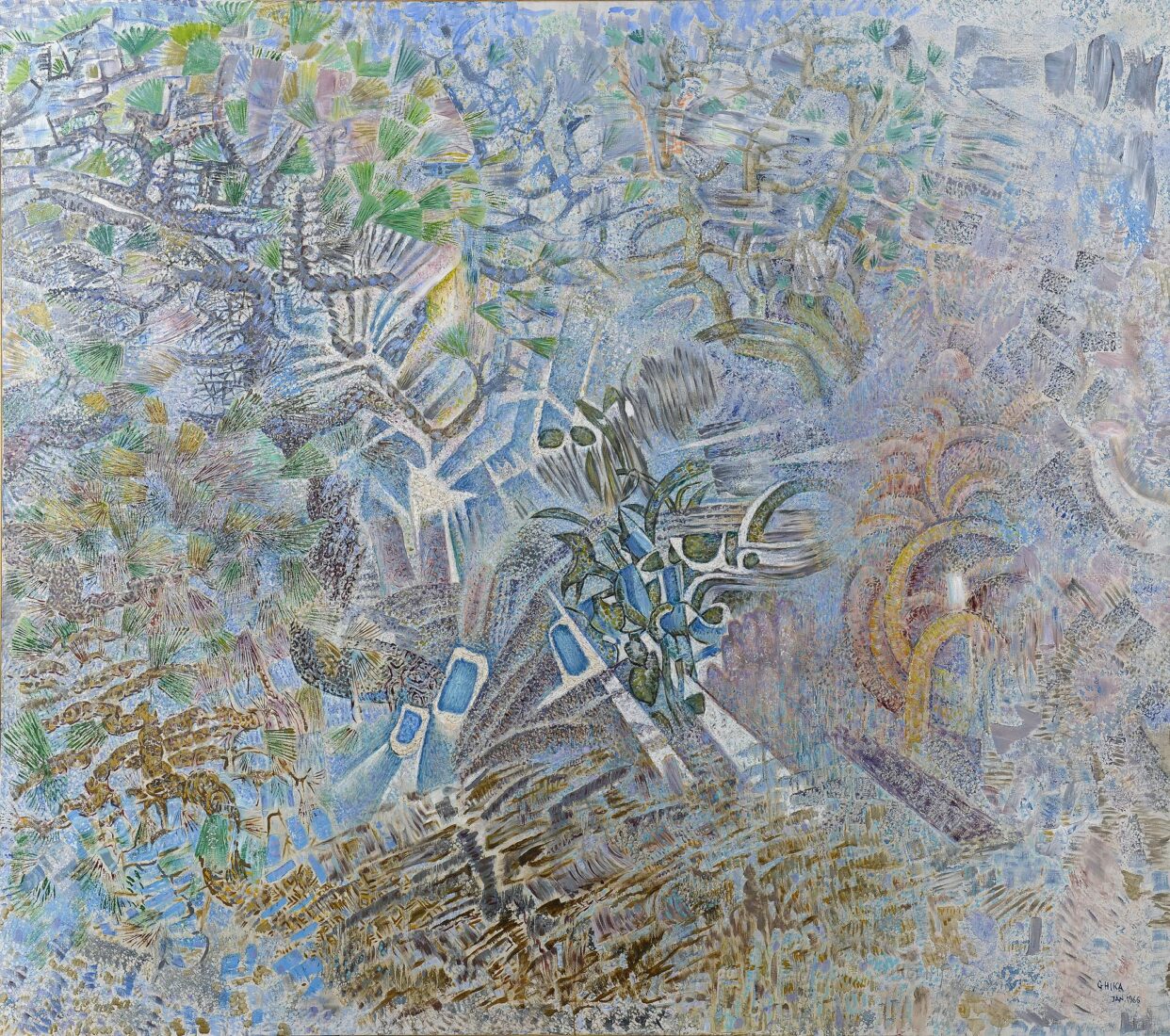
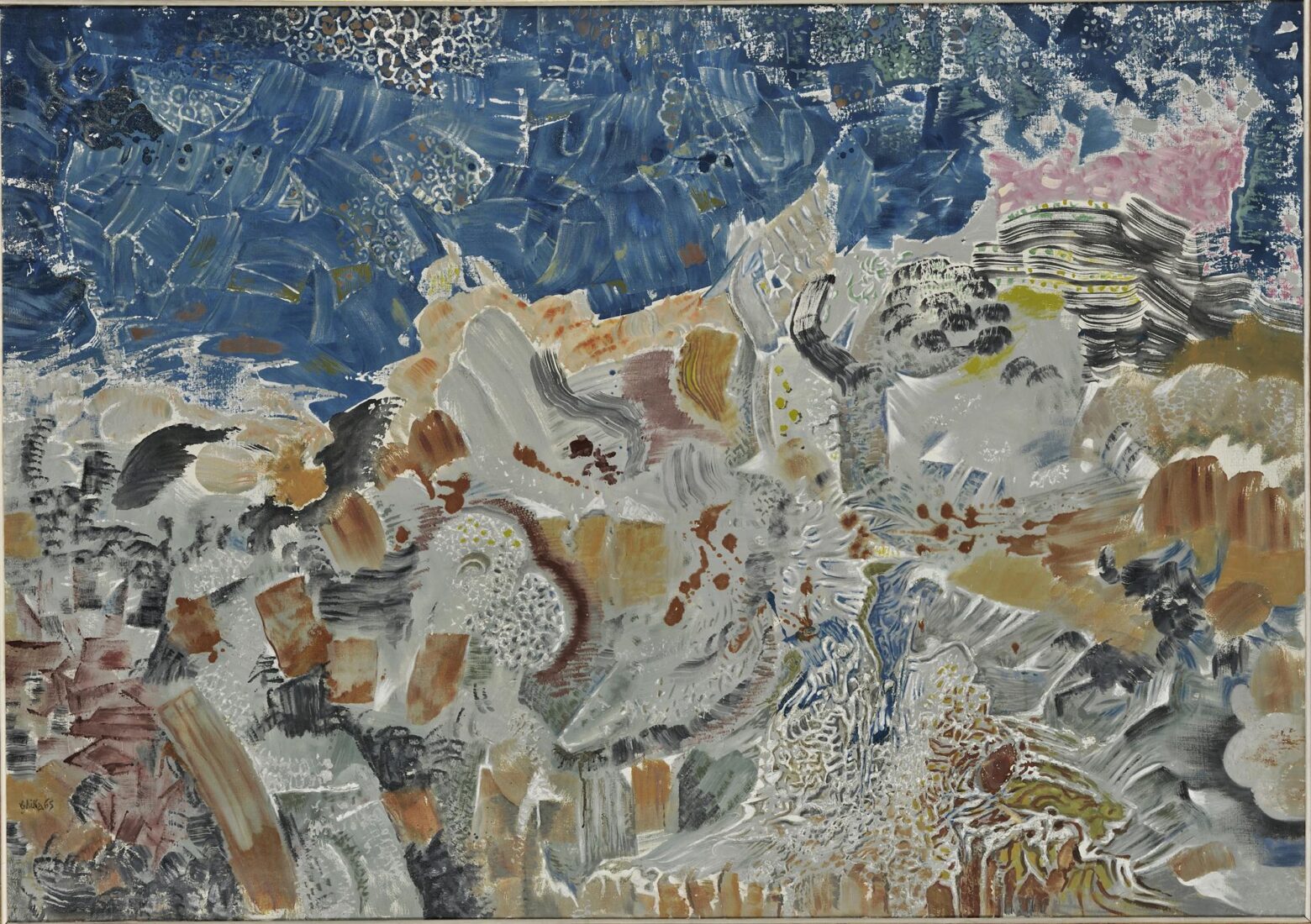
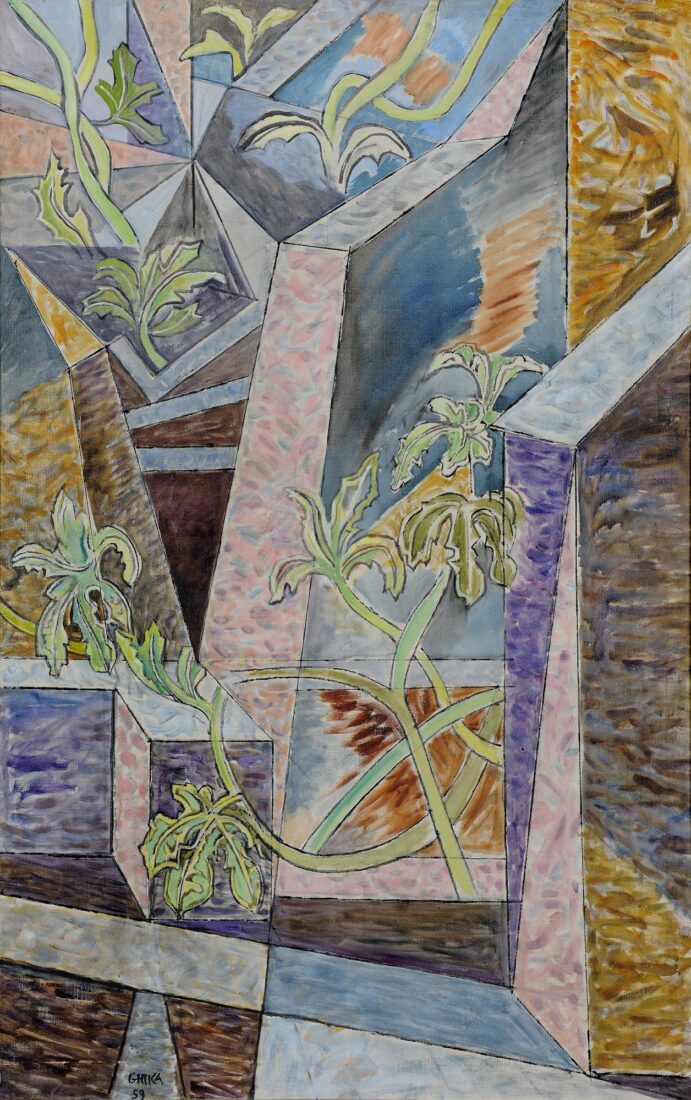
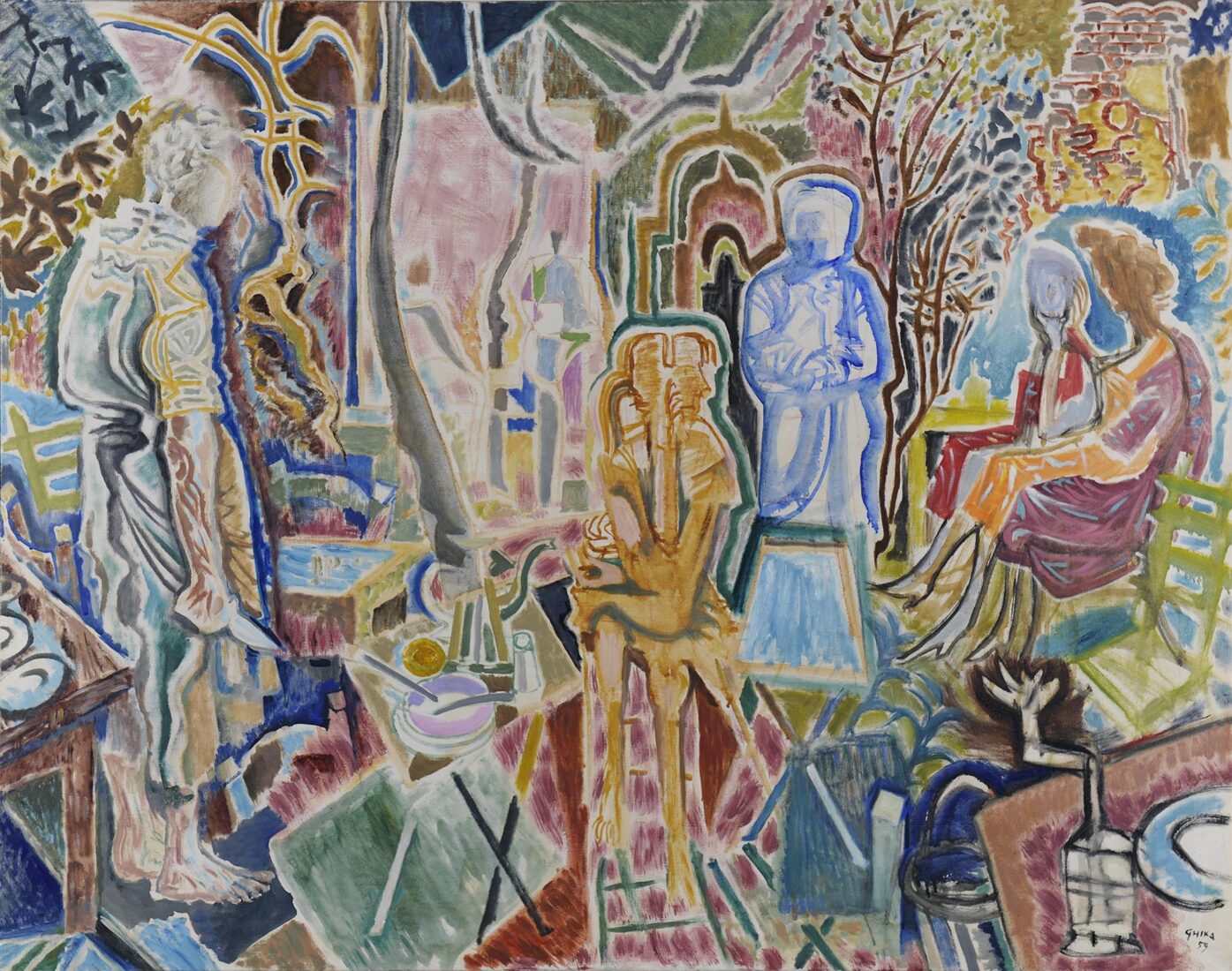
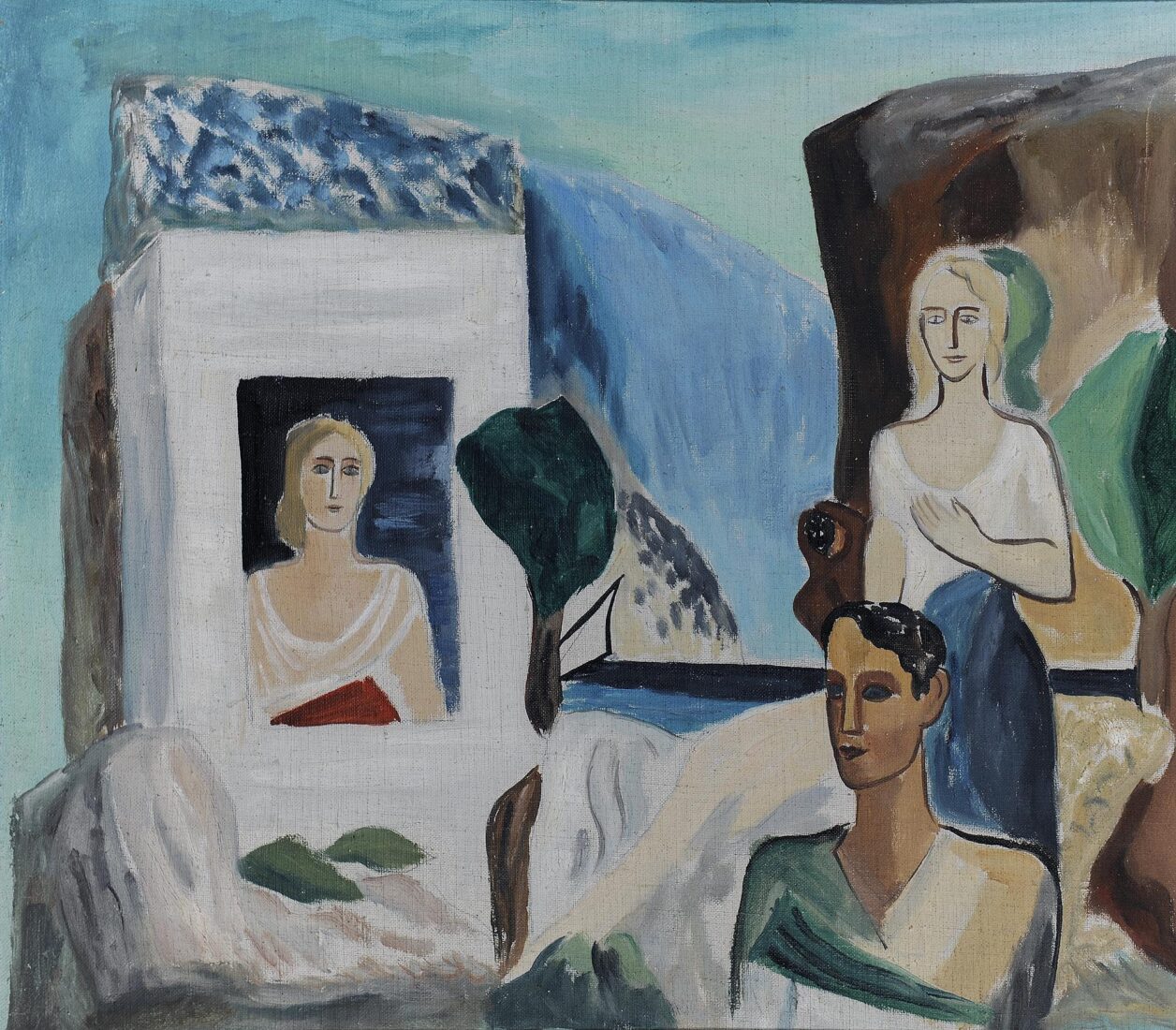
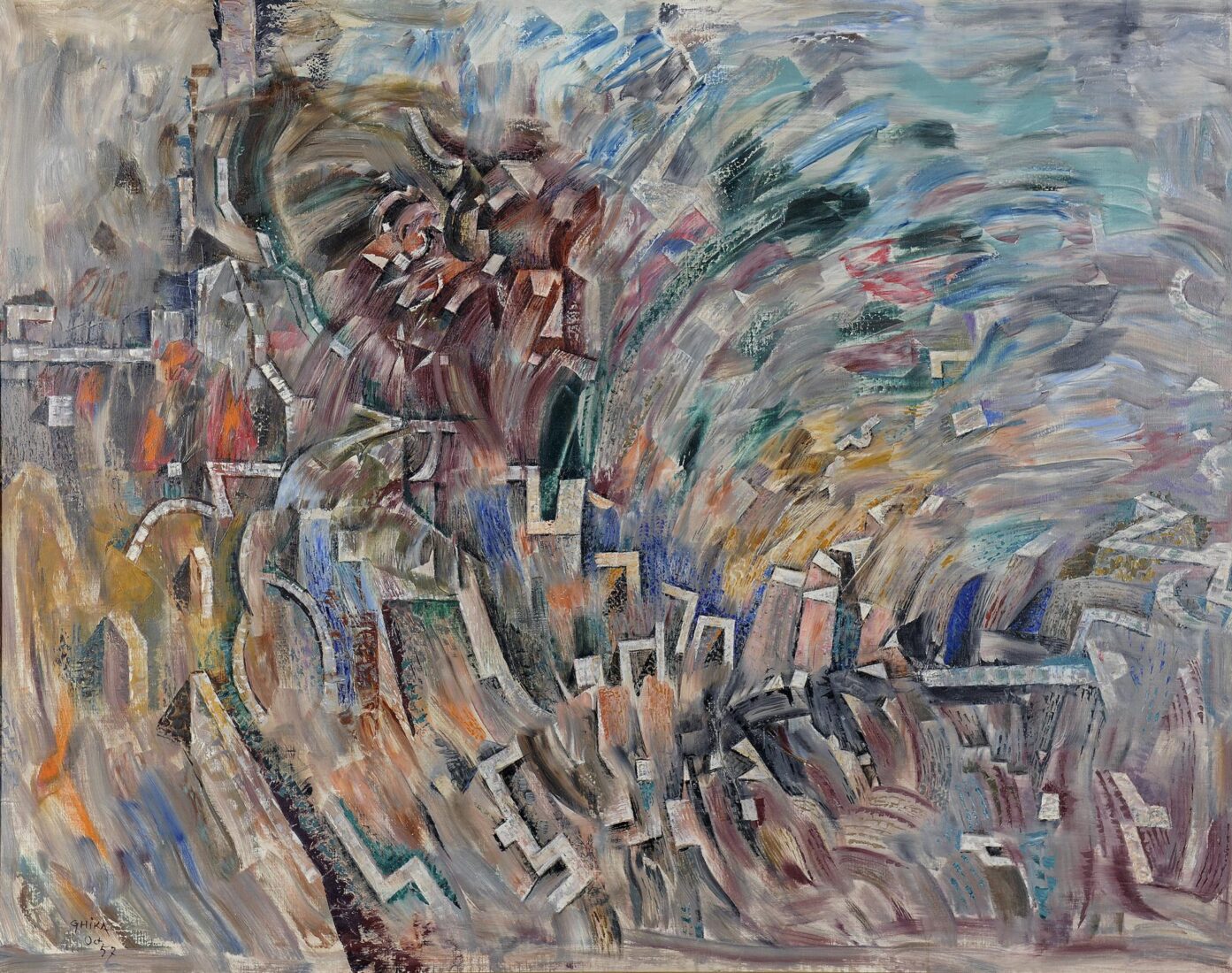
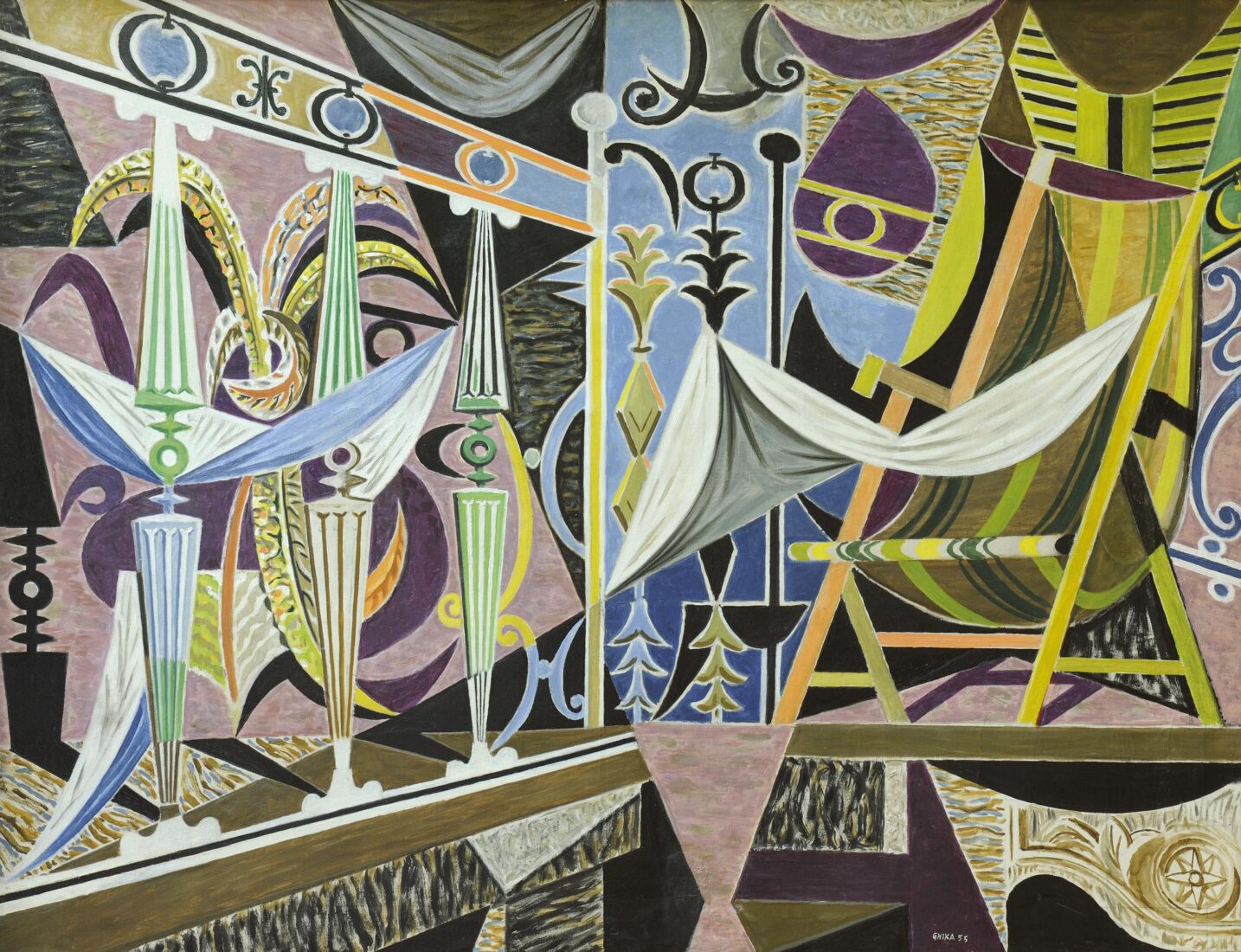
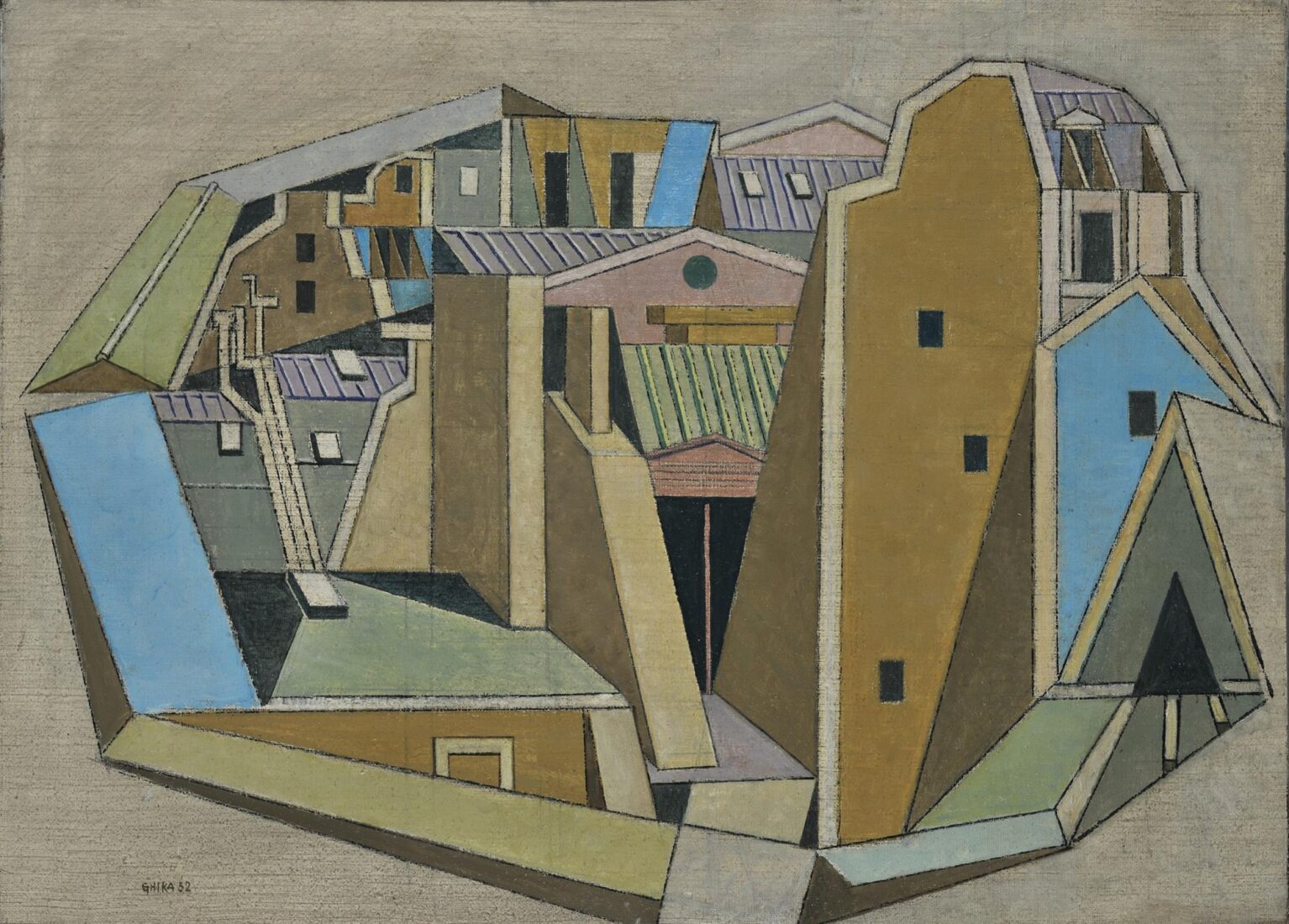
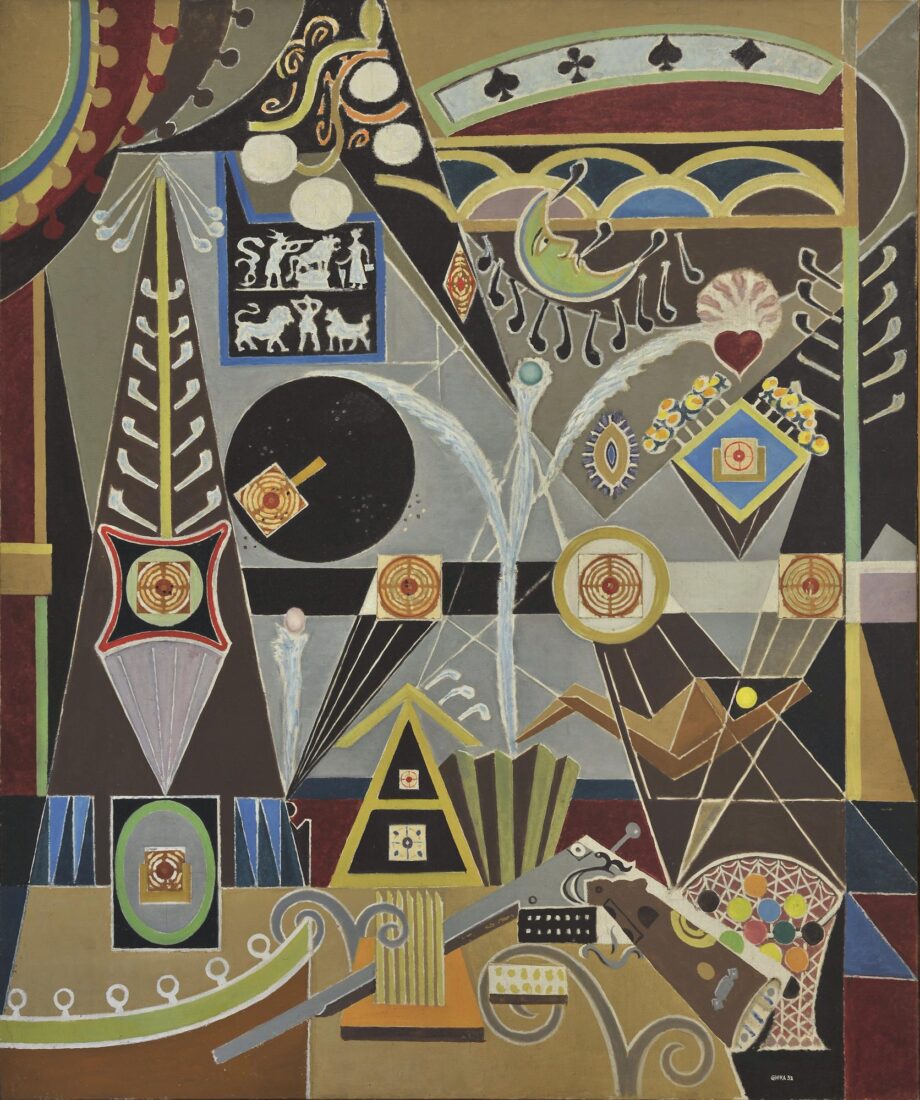
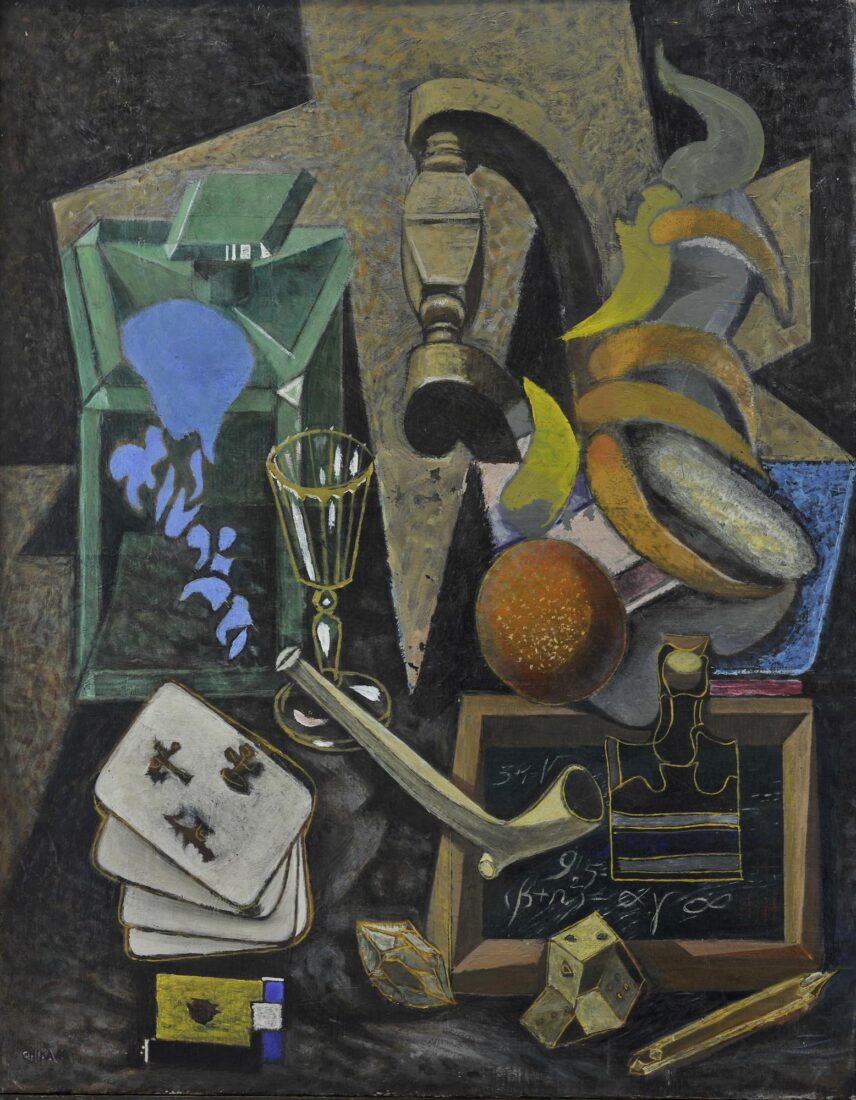
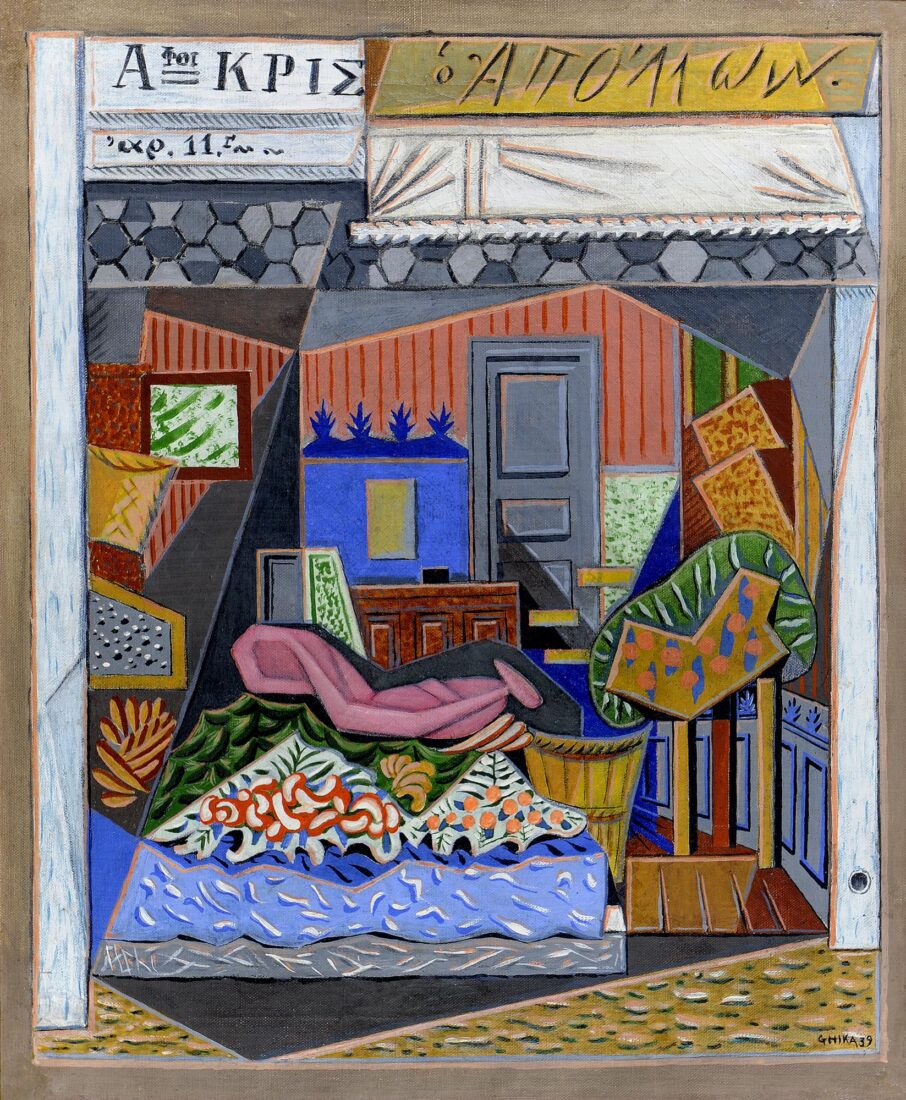
Apollon Grocery Store” helps us understand Ghika’s post-cubist idiom. Carefully reading the painting, one realises that it depicts recognizable objects: a store, its name indicated by a sign. Underneath a white awning are seen the facade and the door. Fruit boxes are arrayed in front; there are various vegetables and plants. So, what is new about this painting? Well, that the artist fragments, refracts the surface — as if we were looking at a grocery store through the pieces of a broken mirror — and depicts a different subject in each piece, in a simple, decorative fashion. The painting thus becomes rather like a puzzle. Chatzikyriakos-Ghika loves vivid colours and multiform shapes, and, accordingly, his paintings convey an effect of elan vital and optimism.
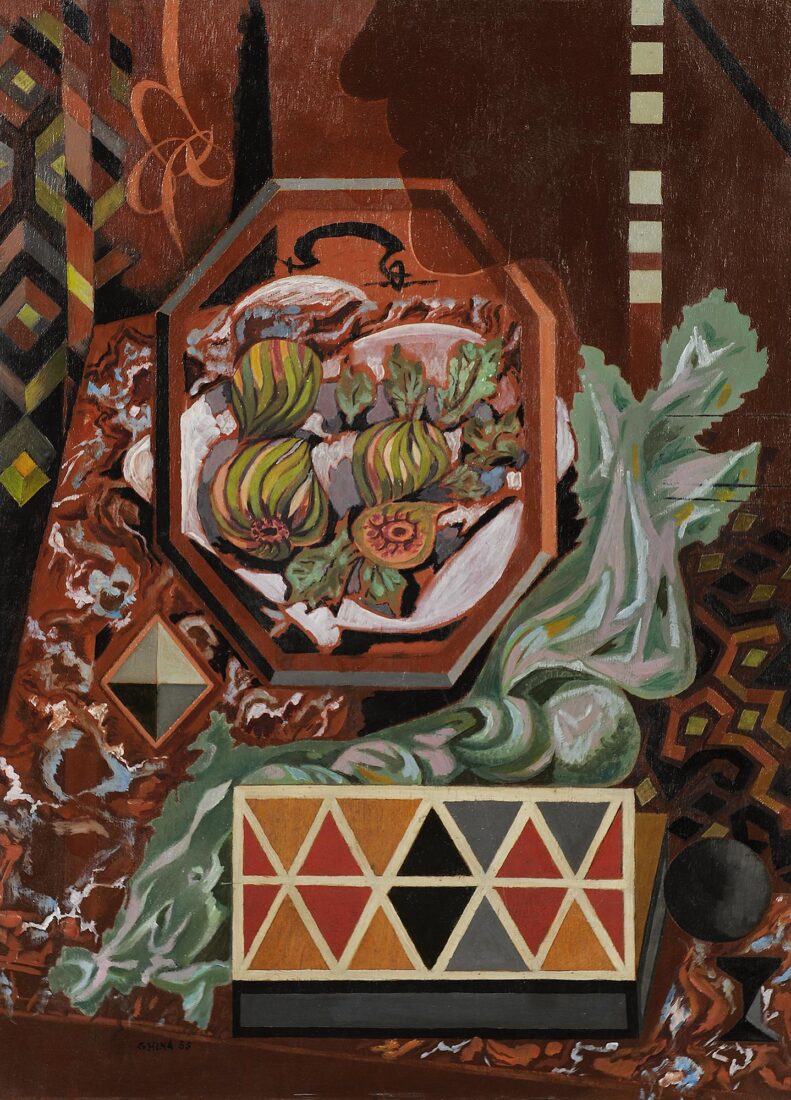
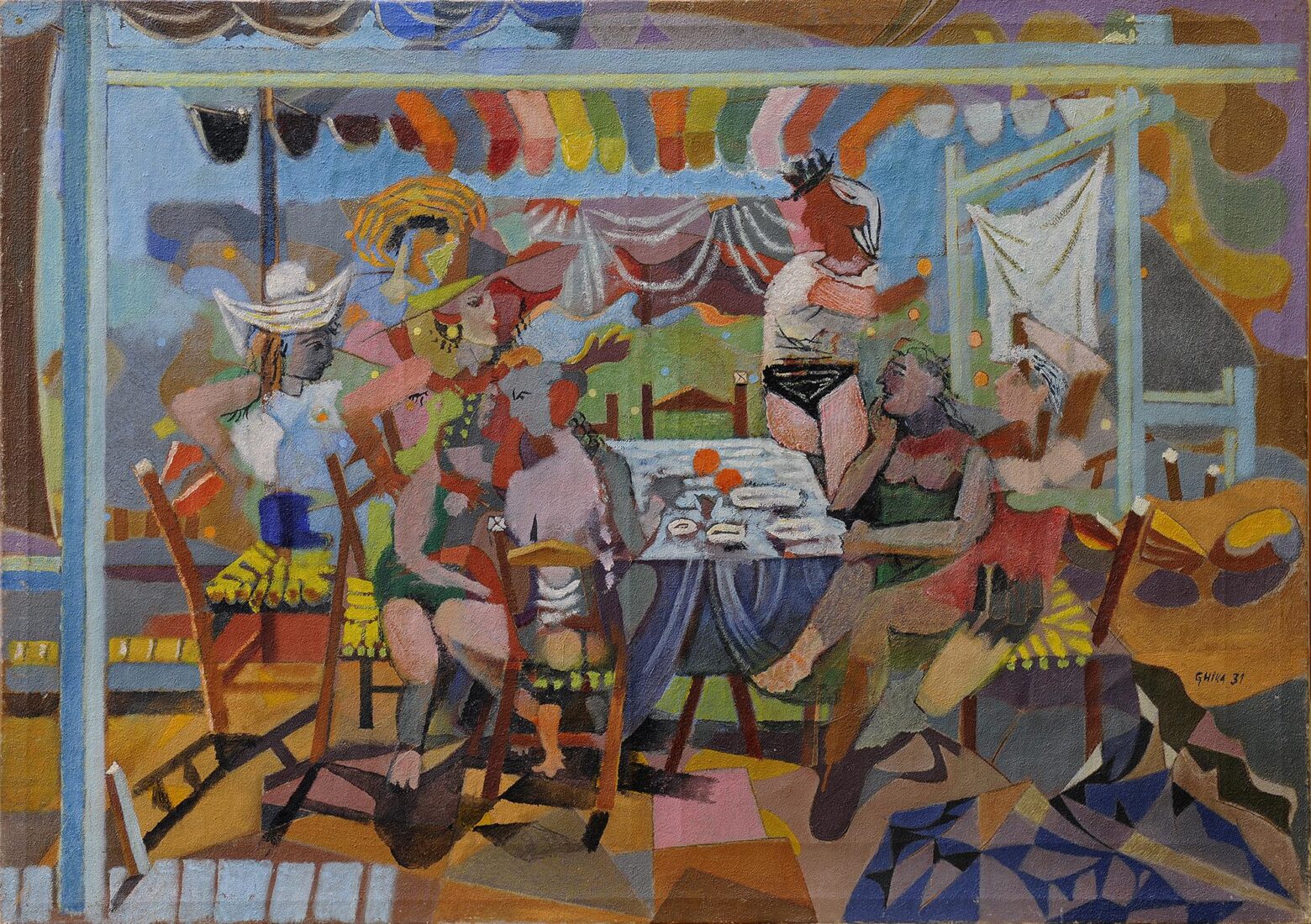
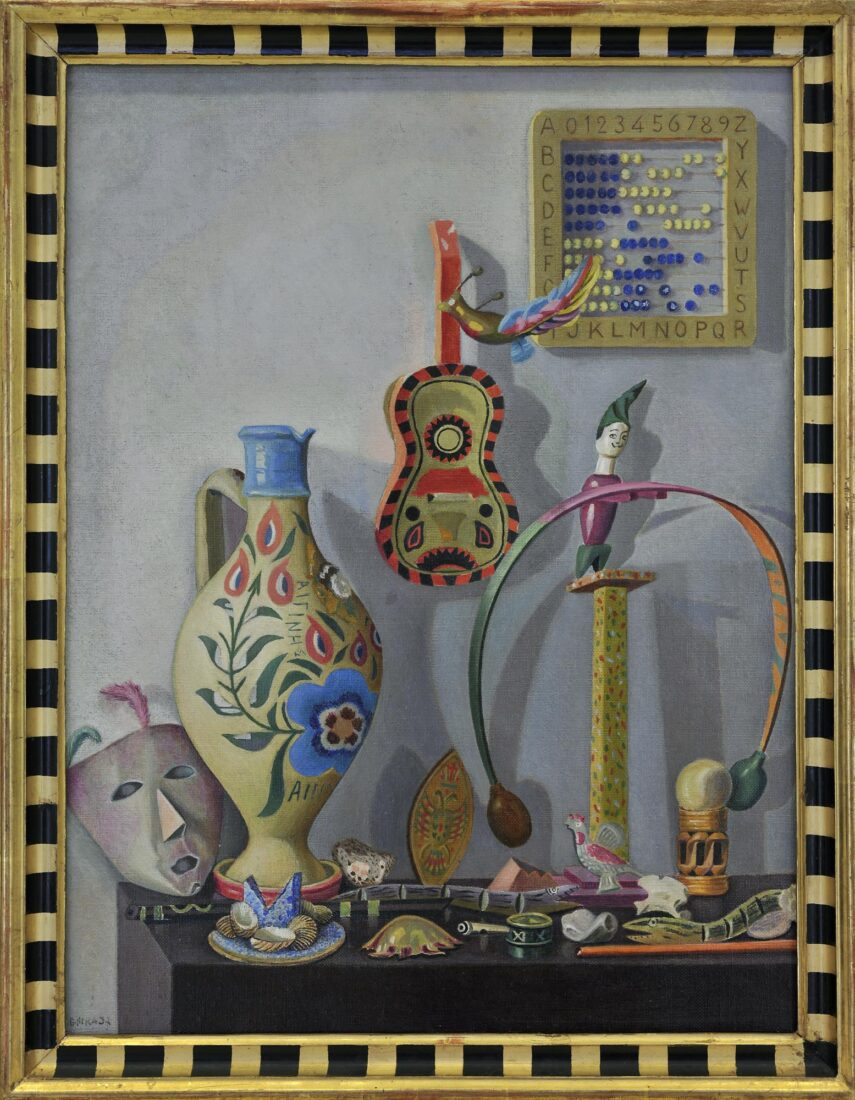
Folk Toys” is a tribute to the simple yet charming and inspired toys of lower-class children. Made of petty materials – paper, wood, clay – and imaginatively coloured, they were in no way inferior to the mechanical or porcelain toys of upper-class children, of which a member was the painter himself. An abacus, a wooden guitar hanging on the wall, a flowery Aegina vase, a cardboard mask, an acrobat performing his balancing act on top of a multicolour column, and other humble yet beautiful objects lie on array on the table — enter the magical world of a Greek child of old. Yet, all this is not enough to make such an enchanting and poetical a painting as this. How did the artist achieve this magical effect? By using a luminous colour palette without any use of chiaroscuro, that is, without contrasts of highlight and shade. Colourful objects project light greenish shades against a wall painted in light bluish green. The entire scene seems to be like lingering nostalgia – the lost innocence of childhood revisited as if in a dream.
